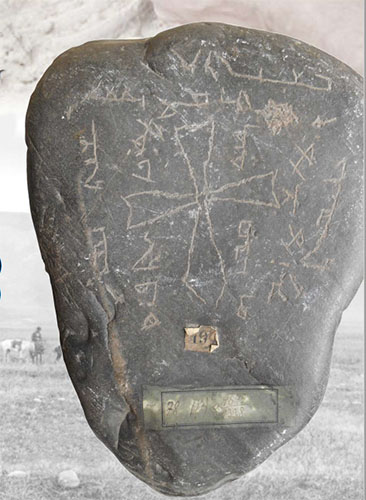Stones, Bones and Genomes: Locating the Fourteenth-Century Plague in Central Asia
Seminario interdisciplinare
 Martedì 18 febbraio, a partire dalle ore 10:00 presso l’Aula seminari SAL3 (terzo piano) del Complesso ex-Salesiani, si svolgerà il seminario interdisciplinare Stones, Bones and Genomes: Locating the Fourteenth-Century Plague in Central Asia.
Martedì 18 febbraio, a partire dalle ore 10:00 presso l’Aula seminari SAL3 (terzo piano) del Complesso ex-Salesiani, si svolgerà il seminario interdisciplinare Stones, Bones and Genomes: Locating the Fourteenth-Century Plague in Central Asia.
Il seminario rientra tra le attività del Dipartimento di Eccellenza, nell’ambito dell’insegnamento di Lingua e letteratura siriaca.
Presentazione
Between 1885 and 1887, the discovery in the region of the "Seven Rivers" (Yeti-su in Turkic, Semirech'ye in Russian; now Kyrgyzstan and Kazakhstan) of Christian cemeteries dating to the thirteenth and fourteenth centuries provided material evidence for the existence in the region of “Nestorian” Christian communities, mentioned by famous travelers as Marco Polo and William of Rubruk. More than six hundred epitaphs on tombstones, written in Syriac and Turkic, provide names, ecclesiastical and professional qualifications, gender and age indications.
A surprising peak of deceases shows up in the years 1337-1339, testifying to an exceptionally high mortality. Several such inscriptions mention “the plague” as the cause of the death. Therefore, the Syro-Turkic epitaphs of Semirech'ye are the earliest, and so far the only, evidence of fourteenth-century plague outbreak anywhere east of the Volga.
The interdisciplinary seminar "Stones, Bones and Genomes: Locating the Fourteenth- Century Plague in Central Asia" aims at presentation and a discussion of recent developments in the study of the “Nestorian” evidence, from the integrated perspectives of the involved disciplines - archaeology, epigraphy, history and paleopathology.
Programma
Chair: Chiara Barbati, Federico Cantini (Università di Pisa
Prima sessione - Stones: Archaeology and Epigraphy
ore 10:00 – 12:00
Steven T. Gilbert (Tandy Institute for Archaeology, USA)
Pier Giorgio Borbone (Università di Pisa)
Seconda sessione - Bones and Genomes: History and Scientific Analisys
ore 14:30 – 16:30
Philip Slavin (University of Stirling)
Gino Fornaciari (Università di Pisa)

 18 Febbraio 2020 10:00
18 Febbraio 2020 10:00 